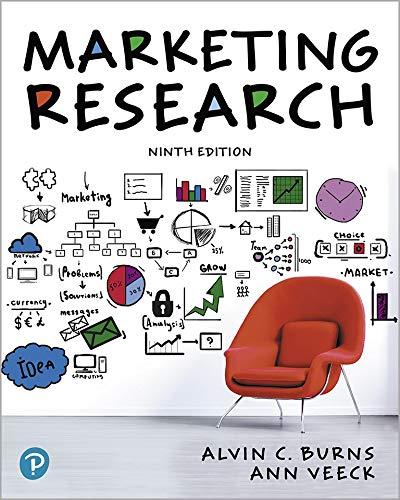Question
As one of the top tourist global destinations, Bali attracts countless foreign and local visitors annually from all around the world. From the outset, Bali
As one of the top tourist global destinations, Bali attracts countless foreign and local visitors annually from all around the world. From the outset, Bali has attracted tourists through not only its fantastic natural resources but also its culture, which is rooted in local religious beliefs. This symbiotic relationship has enabled Bali to create its own identity and to trademark its unique cultural religious tourism product, ‘Balinese Hindu’; interestingly, this product is located within a country where Islam is the predominant religion (Indonesia-Investments, n.d.). Although the island of Bali is only a small province within the country of Indonesia, on hearing the name ‘Bali’ alone, potential tourists may be bewitched with the imagination of an exotic nature and rich culture (cf. Mansoor, 2017). Despite being a Hindu-oriented island, the Balinese Hindu beliefs and practices are totally different from Indian Hinduism. It is believed that Balinese Hindu is the result of an acculturation process of three religions which are Buddhism, Hinduism, and the local tradition of respecting ancestors (Morgan, 2016). Bali lives up to its name, the island of a thousand temples, where tourists can spot countless temples (Pura, in the local language), tiny or enormous, because Pura are where the Balinese people worship their Gods.
Puras in Bali also exhibit the brand of Balinese local architecture, the philosophy of which is based on ‘Tri Loka’, a religious belief that divides the universe into three realms: the God; the human; and the demon, associated with the architecture as outlined below (Friends for Asia, 2012): 1. Nista mandala, the outer area of the temple which describes the entrance of the temple. 2. Madya mandala, the central area of the temple where all the supporting materials are placed. 3. Utama mandala, the holiest area of the temple. Beside architecture, Balinese temples (Friends for Asia, 2012) are also divided into three types based on their location.
1. Major temple. Situated in a city or town that is considered as a religious focus. Each of the major cities has at least three major temples (for example, Pura Besakih, or Mother Temple, in Mount Agung).
2. Village temple. Located in villages and rural areas and used to hold local festivals. Village temples can also be found in important places that have wells and springs.
3. Family temple. A smaller temple that is built for all family members who live together in one household, usually located in the north part of the house (Friends for Asia, 2012).
Puras in Bali are open to everyone; however, there are some local traditions that people should be aware of before entering the temples. Tourists are expected to behave respectfully according to these guidelines:
· Any part of the body lower than the waist should be covered. However the tourists do not have to worry because every temple in Bali provides sarongs (a piece of traditional fabric worn by the locals) if tourist have unsuitable clothing.
· Climbing on any object inside the temples is a sign of disrespect.
· Women who are menstruating are not allowed to enter the temples. Bleeding is considered to be unholy and will desecrate the holiness of the temple.
· Visitors should never sit or stand higher than the priest.
· Some temples do not allow infants without teeth to enter the temple because they are considered to be spiritually incomplete.
· People whose relatives have recently passed away are also not allowed to enter the temple; it is believed that death upsets the family’s spiritual balance (Friends for Asia, 2012).
One of these local traditions apparently upset a tourist from the United States of America, named Emily. As mentioned above, women who are menstruating are not allowed to enter a Balinese temple. While she was on vacation in Bali, Emily intended to visit a local temple as it was one of the key destinations on her itinerary. On arrival at the temple gate, Emily’s attention was drawn to a huge placard warning that menstruating women were forbidden from entering the temple. As a female, Emily felt discriminated against. She thought that the local cultural beliefs were sexist and unethical due to gender discrimination. Emily protested and demanded entry to the temple. Some local people tried to make her understand their religious beliefs in a polite way. Meanwhile, other domestic visitors who witnessed this incident reacted negatively to her action, saying that Emily should behave respectfully to the local culture. Although she was a foreigner, who was just visiting for a short period of time, they said she should be more respectful and that she should have researched the local cultural and religious beliefs in advance of her visit.
References
Friends for Asia (2012, October 1). Balinese Temples. Retrieved from https://www.volunteerbali.org/balinese-temples/ Indonesia-Investments. (n.d.). Hinduism in Indonesia. Retrieved from https://www.indonesiainvestments.com/culture/religion/hinduism/item250 Mansoor, S. (2017, July 6).
Bewitched by Bali. Deccan Herald. Retrieved from https://www.deccanherald.com/content/621294/bewitched-picturesque-bali.html Morgan, B. (2016, November 9).
Intrepid urban adventures. Why there are so many temples in Bali. Retrieved from https://www.urbanadventures.com/blog/why-many-temples-bali/
Questions
1. What is your opinion of Emily’s reaction? Is it reasonable for Emily to get upset because she felt discriminated against? Why? Why not?
2. Do you agree with the domestic visitors’ negative reactions towards Emily? Why? Why not?
3. What would you do if you were a local citizen of Bali and you encountered an incident like the one outlined in the case?
Step by Step Solution
There are 3 Steps involved in it
Step: 1

Get Instant Access to Expert-Tailored Solutions
See step-by-step solutions with expert insights and AI powered tools for academic success
Step: 2

Step: 3

Ace Your Homework with AI
Get the answers you need in no time with our AI-driven, step-by-step assistance
Get Started


